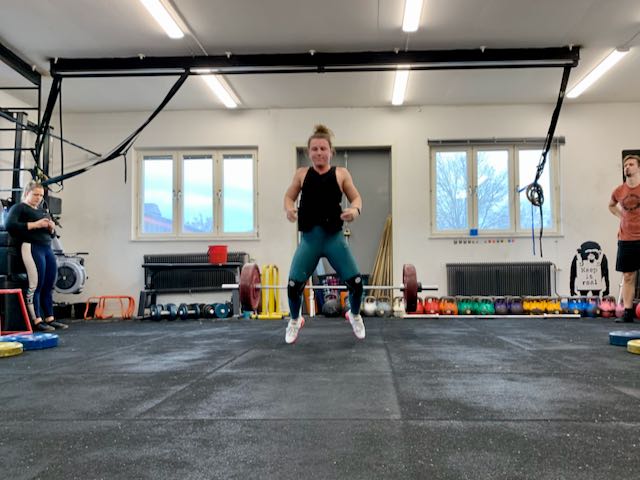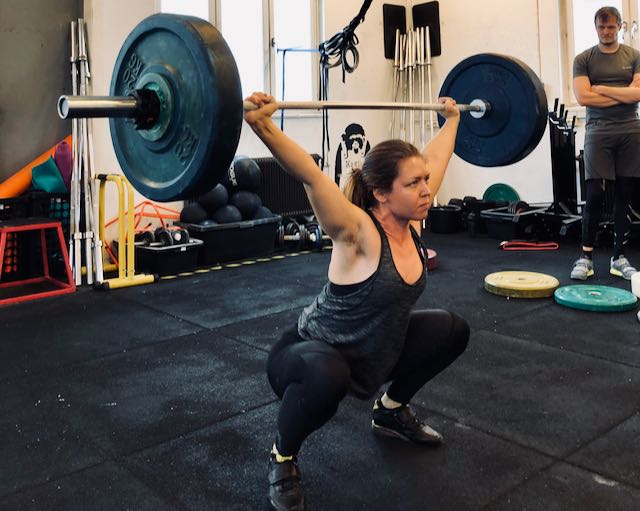What we call the beginning is often the end // And to make an end is to make a beginning. // The end is where we start from.
T.S. Eliot
Skills can be enormously complex, such as playing a musical instrument, making a lay-up in basketball or performing a weightlifting exercise. In such situations the trainer might have a hard time to present all aspects of the skill at once or the student might get overwhelmed by the size of the task. A frequent approach is to divide the task into several units to be practiced in isolation. This approach is often called parts practice, and the idea is to master and then integrate the parts into the whole skill at a later time.
However, some claim that practicing parts of a task in isolation transfers little if at all to the whole task, especially if the task is rapid and ballistic. They would argue for the practice to be structured as whole practice, where the full exercise is done regardless of it’s complexity.
This is reminiscent of the Holism that was summarized in one of the principal works of the Greek philosopher Aristotle as “the whole is more than the sum of its parts”. The idea is that the reduction of the whole to its constitutive elements eliminates some factors. Some sort of synergy that is lost if we separate them. The holistic perspective is seen in diverse intellectual, religious, cultural traditions and diverse disciplines throughout history.
True myth may serve for thousands of years as an inexhaustible source of intellectual speculation, religious joy, ethical inquiry, and artistic renewal. The real mystery is not destroyed by reason. The fake one is.
Ursula K. Le Guin
The Irish Potato Famine has gone down in history as one of the worst tragedies in modern history. In 1845, a fungal infestation, Phytophtthor infestans, made half of the potato crop in a single year inedible and then the blight lasted for another seven years. When the hunger ended in 1852 about one million Irish had died from starvation and a culture had been destroyed.
While the fungal infestation might be technically to blame, what made the situation so severe was the lack of bio-diversity. The idea at the time was to optimize the food production and thus mostly all farming was switched to growing the same variety of potato, a variety that had recently been shown to be very efficient to grow. Had a greater variety been planted the blight would not have hit Ireland as hard as it did, for other strains would have had different exposure to the infestation.
The take away is that reducing and overloading parts (regardless in agriculture or training) means to reduce variety that could protect from downside. And that something is inherently lost in the process of reduction, which will reduce the transfer of training. Both which directs us to make the constraints of practice as loose as possible.

Traditionally cognitive science has viewed high levels of movement variability as a problem for humans when learning a movement. Repetitive practice is often conceived of as gradually reducing the amount of movement pattern variability viewed as noise and the magnitude of variability in performance has been viewed as the foremost way for assessing the quality of control.
But movement scientists have often struggled to come to terms with the complexity humans must overcome to produce even simple movements. The infinite redundancy, yet flexibility needed to navigate the world. There are such a vast number of ways for humans to perform a movement in order to achieve the same goal, that it is hard to understand how the nervous system is not overwhelmed by all those degrees of freedom.
According to Bernstein, who initially formulated the problem, the coordination patterns for complex tasks such as playing that instrument, making that lay-up or performing that snatch begin as fixed, rigid linkages between body parts. This early learning strategy helps people cope with the extreme abundance of degrees of freedom. If the task is beyond the learner’s capacity the problem of controlling the movement system is managed by dysfunctionally constraining the available freedom of movement.
One obvious example of this in the world of weightlifting would be to “lock up the hip” in the snatch turning the exercise into something looking more like a starfish than a flexible weightlifter.

This has lead scientist to think that sometimes less variation would mean not to imply quality of control, but quite the opposite. It seems learning would be maximized when finding the optimum amount of stochastic perturbations in a movement for more, but not too many, degrees of freedom to open up. Too little “noise” and no new information is provided to the learner to gradually unfix the initially strong couplings between muscles and joints. Too much and the movement becomes to rigid to be performed in a constructive way.
This phenomenon is well researched and called the contextual interference effect. Adding some variability, or “noise”, in the form of irrelevant movement components or difficulty when practicing movement can lead to better learning than when practicing simple movement patterns alone. This amount of exploration for the correct response to a changing landscape of performance forces learners to adapt their movement patterns regularly, increasing long-term learning benefits.
We would be better as trainers if we would define ourselves from the problems we wish to solve or the advancements we wish to make rather than what is too common: from the methods we use. For every exercise prescription we make we should always have an specific outcome in mind. Is it to synchronize the catching of the bar with stability into the ground? Is it direction of force? Amount of force? Bar control or body control?
If we think along these lines the method we use become secondary. And with purposeful movement constraints we are more likely to direct learners to the external consequences of their movement patterns rather than the internal processes of producing that movement. Shifting the attention towards the desired outcome of a movement, rather than on how it is accomplished has been shown to both enhance performance and skill acquisition. But to allow for this external focus of attention we need to always think backwards, from the end-result of a movement typical to display behavior we would like to reinforce. Then adjust the complexity of the movement pattern so that the learner can succeed, but not simple enough to be performed perfectly. The key is finding that sweet spot of learning, while still anchor it intentionally, at the end result.

We could do this with any skill in any sport but let’s take the barbell snatch as an example. If the behavior we would like to reinforce is to be able to catch the bar with slightly bent knees and hip, rather than to mimic a starfish, then the end position we should start to design our exercise for this is exactly that position. Then we need to gradually include more complexity to the skill, finding where the athlete becomes so overwhelmed with “noise” that he or she cannot intelligently handle the abundance of choices, forcing, for instance, the dysfunctional freezing of the hip and knee.
This is done by gradually adding distance of the movement, in the example of the snatch that would mean distance traveled by the bar, and then, while maintaining that distance add speed of the bar. For every increase of complexity we assess if the movement is now trained at desired difficulty, if we are still are able to catch the bar the way we want us to, but that doing so is not easy.
When working with external objects we have the option to add to complexity at each position by decreasing the time available to react by increasing the weight of that object, but there are drawbacks to this strategy as it is something that also tend to alter the intermuscular strategies used to perform the movement, and this might limit the contextual transfer of the skill.

Depending on where we first see this happening we can purposely construct a constraint forming “the optimal whole” to reinforce specific outcomes and address specific problems. This would be likely to transfer more to better movement than working with parts smaller, or larger for that matter.
- “Dynamics of Skill Acquisition: An Ecological Dynamics Approach”, https://books.google.se/books?id=2TPODwAAQBAJ
- “A Beginning of the End of the Holism versus Reductionism Debate?”, https://www.tbi.univie.ac.at/~pks/Preprints/pks_323.pdf
- “Learning from History: The Importance of Genetic Diversity”, https://southernhighlandsreserve.org/learning-from-history-the-importance-of-genetic-diversity/
- “The simple rule that can help you predict the future”, https://www.bbc.com/future/article/20190624-how-to-think-about-the-far-future
- “Stochastic perturbations in athletic field events enhance skill acquisition”, https://www.researchgate.net/publication/262484815_Stochastic_perturbations_in_athletic_field_events_enhance_skill_acquisition
- “Attentional focus and motor learning: a review of 15 years”, http://gwulf.faculty.unlv.edu/wp-content/uploads/2018/11/Wulf_AF_review_2013.pdf
